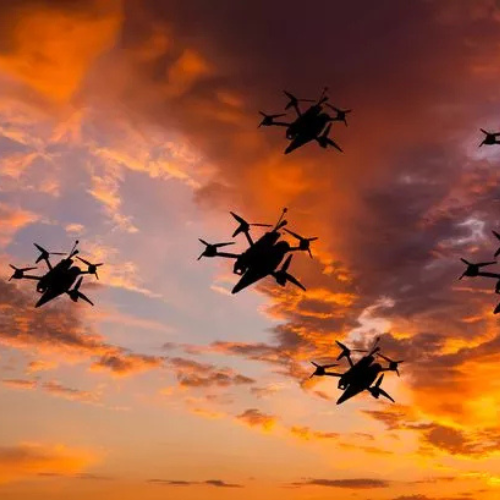On the night of November 3, 2024, Russia carried out a large-scale drone strike against Ukraine, using nearly 100 drones and guided missiles. This attack shocked many and raised fear among both civilians and military personnel. The Ukrainian Air Force reported that they managed to shoot down 66 drones, showing some success in their defense efforts. However, the scale of the drone strike left many worrying about the ongoing conflict.
In the past week alone, Ukrainian President Volodymyr Zelenskyy revealed that Russia had unleashed around 900 aerial bombs, 500 drones, and 30 missiles. These numbers indicate a serious escalation in attacks, which many believe is part of Russia’s strategy to keep pressure on Ukraine. Zelenskyy has been vocal about the need for more military support from Western countries, urging them to provide advanced weapons and defense systems.
Drone Strikes Impact Multiple Regions
The drone strikes did not target one specific area but affected several regions, including major cities like Kyiv, Zhitomyr, and Sumy. The debris from the intercepted drones caused minor fires and damaged civilian buildings, showing how the war is deeply affecting everyday life for Ukrainians. People in these areas are living in constant fear, unsure when the next drone strike might happen.
The drones used in these drone strikes, particularly the Iranian-made Shahed models, have become more advanced and are being used cleverly by Russian forces. This evolution in drone technology is concerning, as it poses a significant threat to Ukraine’s infrastructure and the safety of its citizens. After the drone strike offensive, President Zelenskyy took to social media to call for more international help. He stated, “We need long-range capabilities for our security; these attacks would not have been so frequent if we had sufficient support from the world.” This plea highlights the urgency for Ukraine to receive more military assistance.
Growing Tensions and Human Costs
The recent drone strikes are part of a broader pattern of escalating violence. Ukrainian military officials warned that the attacks have intensified since autumn, with Russian troops capturing key areas. The situation has become critical, especially in towns like Kupiansk, where fighting is dangerously close to residential areas. Reports indicate that local authorities are urging residents to evacuate as conditions worsen.
Autonomous Warrior 2024: AUKUS Showcases Advanced Drone Warfare
Tragically, the human cost of these military operations is high. Following the November 3 drone strikes, local officials reported three fatalities and at least 24 injuries in various locations. One of the hardest-hit areas was Ivanopillia, where people suffered immensely from the bombardments. The fear and anxiety among civilians are palpable, as families face tough decisions about whether to stay in their homes or flee to safer areas.
The atmosphere is heavy with despair, particularly for residents in regions like Kherson and Luhansk, who are caught in the crossfire of ongoing military confrontations. Many find themselves stuck, unable to leave their homes due to the constant danger. Ukrainian soldiers are also feeling the strain, as they face difficult conditions on the frontlines. One soldier, Oleksandr Isaiev, expressed his frustration with the inequality in artillery fire, saying, “They fire 10 shells for our one.” This statement reflects the growing concern over the imbalance in military resources and the urgent need for international support.
Zelenskyy’s Calls for Stricter Sanctions
In response to the escalating drone strikes, President Zelenskyy is pushing for stricter sanctions against Russia. He is calling for tougher export controls to limit Russia’s access to the materials needed for drone and missile production. This demand comes as reports indicate that some Western components are still being used in Russian military operations, raising questions about the effectiveness of existing sanctions.
Despite the harsh realities of war, the spirit of resilience among Ukrainians remains strong. Local authorities and military officials are actively working to encourage evacuations from frontline towns like Kupiansk. They are aware of the risks residents face and are doing their best to support those who choose to leave.
Personal stories from civilians illustrate the emotional toll of the conflict. One woman, Nina Marchenko, shared her heartbreak over losing her home and her pet due to the drone strikes. She expressed her anger towards the Russian government, saying, “He’s driven us from our house.” Such accounts highlight the profound human impact of the ongoing violence.
As the situation in Ukraine continues to deteriorate, the world watches closely. The complexity of the conflict, with shifting military strategies and the involvement of foreign troops, adds layers to the already dire circumstances faced by the people of Ukraine.


